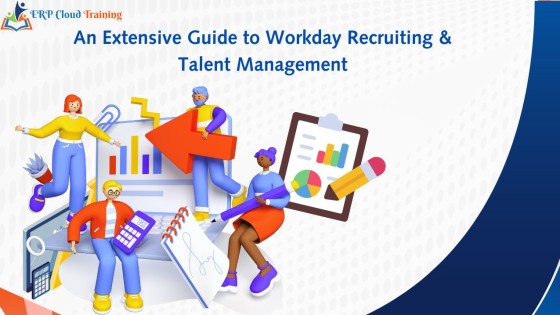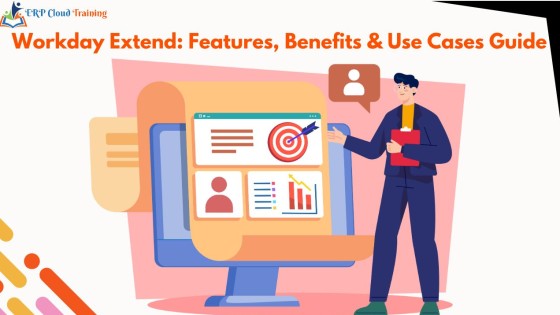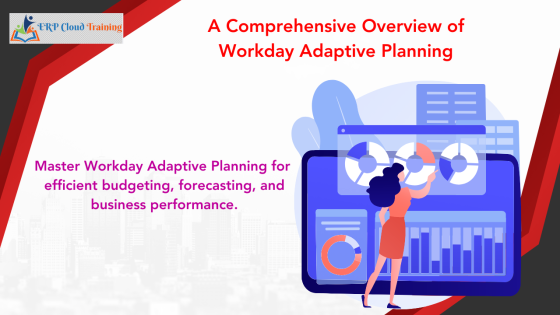Workday Tutorial: Guide for Beginners & Professionals
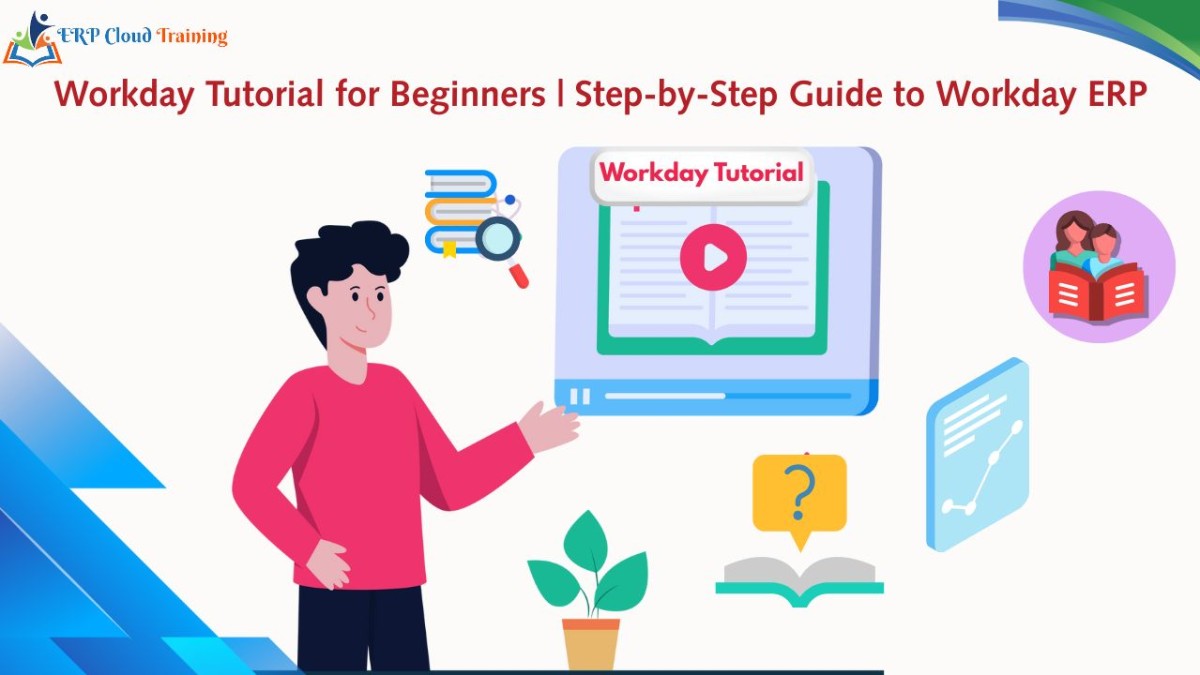
Explore this detailed Workday tutorial covering modules like HCM, Finance, Payroll & more. Learn how to navigate, implement & grow your Workday
Table of Contents
- Introduction
- What Is Workday?
- Who Uses Workday & Why It Has Become So Popular?
- Getting Started with Workday (Step-by-Step Tutorial)
- Workday Studio & Integration Basics (Technical Overview)
- Workday Security & Roles
- Overview of Workday Architecture
- Key Modules in Workday
- Workday User Interface and Experience
- Why Do Users Appreciate Workday’s UX?
- Workday Reporting and Analytics
- Workday Certifications & Career Path
- Benefits of Learning Workday
- How ERP Cloud Training may help you?
- Conclusion
- FAQ
Introduction
Workday continues to dominate the ERP cloud software market over the years. In the past five years, the demand for Workday professionals has drastically increased year-over-year growth with major corporations like Netflix, Amazon, & Deloitte adopting Workday for Human Capital Management (HCM), Payroll, & Finance.
Workday is popularly used by over 11,000 organizations around the world. More than 60% of the Fortune 500 companies use Workday to supercharge work, elevate their people, & move their business forever forward.
An effective Workday tutorial should offer a highly comprehensive learning journey. It covers everything from its core architecture to advanced features & potential career pathways. Read on to discover the various key components that make these tutorials truly valuable.
What Is Workday?
Workday is a cloud-based ERP system that has all the potential to integrate Finance, HR, Payroll & Analytics. It largely simplifies various complex business processes with an intuitive & modern interface. Workday has no servers to manage – updates roll out automatically, keeping you current.
It supports everything from onboarding new employees to managing the multi-million dollar budgets, all from a single platform.
Who Uses Workday & Why It Has Become So Popular?
Workday is widely adopted by large enterprises & corporations across different industries for its unified cloud platform that simplifies HR, payroll, finance, & workforce planning.
Here is a look at who uses it—and why:
Bank of America uses Workday for Finance & Workforce Management, streamlining all their financial operations & improving HR workflows across the entire organization.
Amazon adopted Workday’s Human Capital Management (HCM) suite to manage its rapidly growing workforce very efficiently, ensuring overall performance & scalability.
Netflix also leverages Workday for talent management & organizational planning, helping HR teams align people with their respective business goals.
Target uses Workday for payroll and workforce scheduling, replacing all its legacy systems with real-time, & cloud-based automation for streamlined operations.
Pfizer benefits from Workday’s financial planning and analytics, enabling better forecasting & budgeting in a heavily regulated industry.
T-Mobile relies on Workday’s HCM and recruiting modules in order to enhance hiring strategies & workforce engagement.
The popularity of Workday stems from its ability to serve as an all-in-one cloud solution that is highly scalable, secure, & is continuously updated. No matter if it is a tech company, a healthcare giant, or a retail chain—Workday adapts to the various unique demands of each business.
Workday’s intuitive interface, feature of real-time reporting, & integrated modules make it a go-to ERP for modern enterprises looking to replace outdated, siloed systems.
It has become highly popular because it offers:
Features | Details |
Cloud-Based Platform | No requirement of any hardware, access it anytime, anywhere. |
Centralized Data | Offers unified systems that effectively consolidate all necessary business operations into a single platform. |
Real-Time Reporting | It provides dashboards & analytics for quick decision-making & visibility into operations. |
Business Process Configuration | Enables proper configuration of complex business process frameworks customized to the needs of each organization that adopts it. |
Strong Security Compliance | Workday adheres to global standards like GDPR, ISO, SOC 1 & 2 in order to ensure data protection & regulatory compliance. |
Workday’s high level of user-friendliness & scalability make it one of the best cloud ERP tools of today’s time.
Getting Started with Workday (Step-by-Step Tutorial)
Login & Navigation
Use the Workday URL for your organization (ie, https://companyname.workday.co...) or SSO portal.
Enter your username and password.
Do full multi-factor authentication (MFA) if asked.
Setting Up the Employee Data
Log in as the required security role (ex : HR Partner).
- Hire or Create a Pre-Hire:
Start with “Hire Employee” or “Create Pre-Hire”.
- Enter Personal Info:
Name, DOB, contact number and national ID.
- Add Job Details:
Job profile, location, time type, supervisory org, etc.
- Set Compensation:
<Include guaranteed pay, bonus and other pay elements.
- Complete Additional Info (optional):
Skill set, education and degrees, certifications, work history.
- Assign Costing Allocations:>
*Attach link of cost centers and percentages if possible.
- Benefits & Time Tracking Enrollment (if applicable).
Review & Submit:
- Verify all information, and then submit for approval.
You can’t perform HR, payroll, or compliance if Workday is not configured right.
Manage Time Tracking
Time In / Clock In -- Log the hours you've worked directly from the calendar view.
Update Time – Edit time submissions (if not already approved).
View Time - Look back at current entries or those from the past.
Manager Approval - Managers review and approve submitted time.
Manage Absence Management
Request Absence - select type (e.g., vacation, sick), date ranges and submit.
See Absence Balances - View leave balances and accruals.
Correct/Cancel Absence - Change or cancel requests.
Management Approval – Managers approve or return time off requests.
How to Create a Custom Report in Workday
Search “Create Custom Report”to find the tool in Workday.
Specify a report name and specify the report type (Simple or Advanced) and data source.
Choose fields# and add #filters# as desired.
Permissions for whom it's visible and who can run it.
Add sorting/grouping if desired.
Run the report to test the results.
Workday Studio & Integration Basics (Technical Overview)
Workday Studio is being used by developers to build the most advanced integrations.
Types of Integration:
EIB (Enterprise Interface Builder) – Import/export data with Excel as well as templates.
Workday Studio – Drag-&-drop XML Logic & Java
Cloud Connectors – Built-in-tools for popular apps like ADP or Salesforce
Sample Use Case
Integrate payroll system with bank
Use Studio to convert currency, validate entries, & push data to bank
Workday Security & Roles
Workday Security protects your data through:
Domains – Specific datasets (e.g. info of salary)
Policies of the Business Processes – Task permissions
Roles – Assigned by supervisory org (e.g. Timekeeper, Partner)
Security largely ensures the right people access to the right data.
Overview of Workday Architecture
Workday architecture is built on:
Multi-tenant, SaaS model – All clients run on a shared platform.
Object-oriented Data Model – Everything is an object (E.g. Employee, Department etc.)
In-memory Database – It helps in faster real-time analysis
REST & SOAP APIs – It offers seamless integration with third-party tools
Integration Framework- You will avail built-in tools like Workday Studio, Enterprise Interface Builder (EIB), & Cloud Connect that makes it easy to automate data exchange.
Security Model – Workday uses role-based access control (RBAC) as well as domain-based security policies. These ensures users only access those data that they are authorized to access.
Business Process Framework (BPF) – It allows configure the workflows like onboarding, promotions, time-off requests etc. Business organizations can adapt or extend processes without coding.
Mobile-First Architecture – It offers responsive design & native apps for iOS & Android in order to support anytime, anywhere access.
Reporting & Analytics Layer - Embedded analytics with Workday Prism & custom reports allow users to analyze all data across modules with the ease of the feature like drag-and-drop.
This particular architecture strongly enables real-time analytics as well as updates without downtime.
Key Modules in Workday
Workday HCM (Human Capital Management)
Workday HCM efficiently manages:
Core HR – Job profiles, employee records
Talent Management Goals – Performance, goals, learning
Recruiting – Career sites, pipeline reports etc.
This is the most widely used module & also a hot search topic under “Workday Tutorial for HR”.
Workday Finance
Workday Finance covers the following:
General ledger, accounts, & journals
Procurement & expenses
Project accounting & billing
It also supports complete financial control, proper compliance, & forecasting.
Workday Payroll and Time Tracking
Workday Payroll involves:
Processing of multi-country payroll
Time submissions & schedule management
Compensation rules & compliance
Workday Workforce Planning & Analytics
It is an essential module for data-driven decision-making.
Key Functions:
Prism Analytics – This combines Workday & non-Workday data for deeper insights.
Benchmarking – It compares organizational performance with the prevailing industry standards.
Headcount Planning – Align the hiring plans with the budgets & goals.
Strategic Workforce Planning – It visualizes the requirements of the future workforce.
Workday Student (for Higher Education)
It is a specialized solution for universities & academic institutions.
Key Functions:
Admissions – It manages applicant tracking as well as onboarding.
Student Records – Track enrolments, grades, & transcripts.
Financial Aid – Automate the awards & compliance with the prevailing government policies.
Curriculum Management – It is used to schedule & manage courses.
Advising & Career Planning – It helps students plan the academic & career paths.
Workday Learning
It is a modern LMS (Learning Management System) that is built into the Workday suite.
Key Functions:
Personalized Learning Paths – It create targeted programs based on job roles or as per relevance to different teams.
Mobile Learning – It enables access to courses anytime, anywhere.
Compliance Training – This assigns mandatory training modules automatically.
Embedded Video – Host & track video content usage.
Workday Projects
It helps teams manage internal as well as client-facing projects efficiently.
Key Functions:
Resource Planning – It assigns the right people to the right project.
Cost Tracking – It is helpful in monitoring project spend in real time.
Billing & Revenue Recognition – It automates invoices & track profitability.
Workday Procurement
Workday Procurement enables several businesses to manage their entire purchasing lifecycle.
Key Functions:
Supplier Management – It on boards and evaluates vendors.
Purchase Orders – It creates, tracks, & approves requests of procurement.
Spend Analytics – You receive adequate visibility into various expenses by category or supplier.
Workday Expenses
It is a self-service tool that efficiently integrates with Finance & Payroll modules.
Key Functions:
Mobile Submission – It is used to upload receipts & submit expenses on-the-go.
Policy Compliance – It automatically flag out-of-policy spending.
Analytics – It identifies opportunities of cost-saving.
Workday Adaptive Planning
It is a standalone module for the purpose of planning, budgeting, & forecasting.
Key Functions:
Financial Modeling – It creates driver-based budget scenarios.
Workforce Planning – It align budgets with the existing talent needs.
Dashboard Reporting – It is useful in sharing financial KPIs with stakeholders.
Collaboration – It enable teams to work on certain plans simultaneously.
Workday Prism Analytics
It is useful in extending analytics by blending internal & external data securely.
Key Functions:
Data Transformation Pipelines – It is used to clean & shape data for the purpose of analysis.
Role-Based Access – It is helpful to control who sees what.
Data Visualizations – It builds interactive reports & dashboards.
All the modules work in unison for achieving streamlined workforce operations.
Workday User Interface and Experience
Workday invariably offers a modern & intuitive experience that, in true sense, simplifies several complex enterprise tasks. Its design largely ensures both first-time users as well as seasoned professionals can navigate effortlessly.
Here is what makes the Workday UI/UX stand out:
1. Intuitive, Consumer-Grade Interface
Clean, modern design that is, to a large extent, similar to popular consumer apps.
Easy-to-recognize icons & visual cues that reduce learning curves.
Workday presents a dynamic homepage layout that surfaces the relevant tasks, updates, & alerts with high clarity.
2. Mobile-First Approach
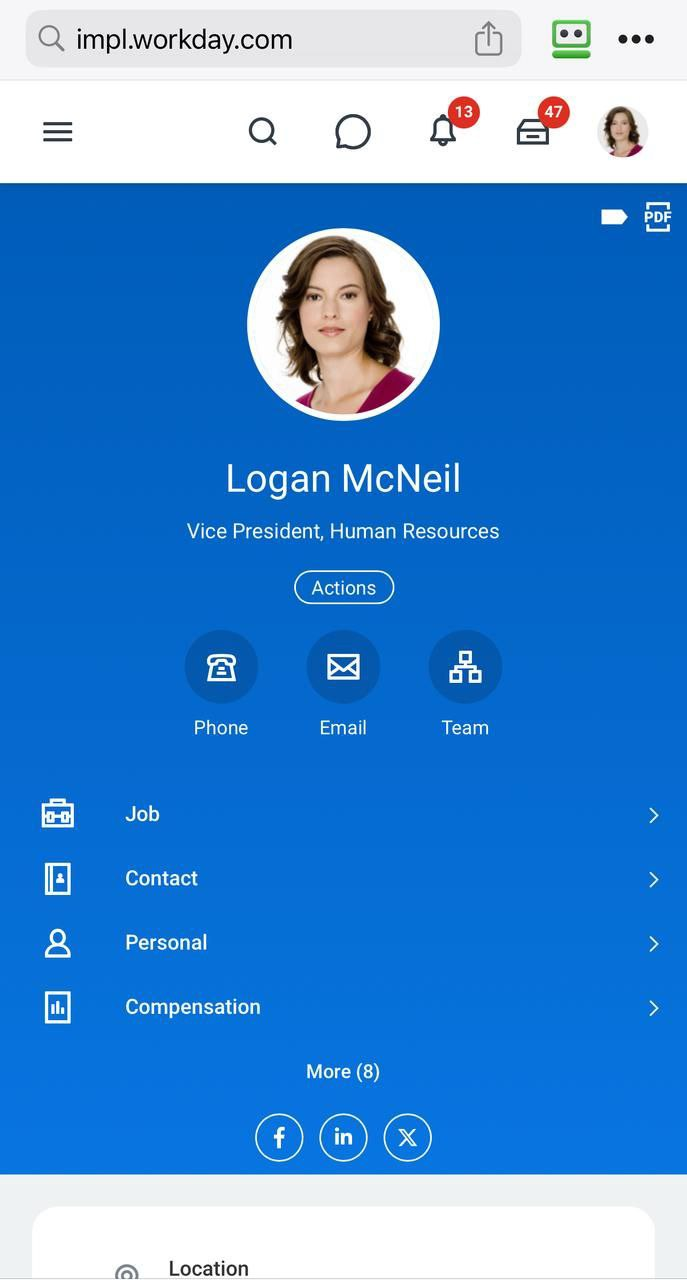
It is a fully responsive platform across devices –tablet, desktop, & mobile.
Various native mobile apps provide a very secure & consistent experience on the go.
Workday supports mobile approvals, time tracking, and data entry.
3. Role-Based Personalization
Dashboards and homepages are well-tailored to specific roles (Finance, HR, IT, etc.).
Worklets (custom tiles) allow quick access to all the frequently used features for the users’ convenience.
Users only see the data & tasks that are relevant to their role.
4. Self-Service Focus
Workday empowers employees & managers to complete tasks without any kind of IT support.
Certain self-service options for leave requests, payslips, benefits, & profile updates are readily available on Workday.
Workday reduces dependency on HR/helpdesk for numerous routine queries.
5. Powerful Search
Workday presents an absolutely smart, Google-like search bar with predictive suggestions.
Workday allows users to find tasks, reports, people, & help resources in seconds.
Workday reduces time of navigation by going directly to the needed function.
6. Embedded Analytics
Workday reports and dashboards are embedded throughout the application.
Users can easily access KPIs & real-time insights without switching tools.
Visualizations considerably support better decision-making at every level.
7. Guided Processes
Workday presents step-by-step prompts guide users through various complex workflows (e.g., Hire, onboarding, payroll setup).
It minimizes errors & speeds up the completion of tasks.
It is useful for infrequent tasks that users may not remember very clearly.
8. Continuous Updates
Workday actively delivers several updates automatically every six months without any delay.
Users largely benefit from new features & security improvements without any kind of disruption.
Continuous updates enhance the Workday platform without requiring manual upgrades or retraining.
Why Do Users Appreciate Workday’s UX?
Workday is strategically designed for real users—not just administrators. Here are why employees & business leaders love the Workday experience:
Less Training Required - Even new users can accomplish their tasks quickly and all thanks to intuitive design.
Faster Task Completion - Search, shortcuts, & personalization help users to save their valuable time every day.
Greater Autonomy - Employees & managers can easily complete HR & finance tasks on their own.
Consistency Across Devices – No matter if on a phone or desktop, the experience feels absolutely seamless.
Smarter Decisions: Workday’s embedded analytics & alerts keep users informed in real time.
In short, Workday’s UI/UX is not just good-looking—it is built to make enterprise work easier, faster, & more human.
Workday Reporting and Analytics
Workday Reporting and Analytics is certainly one of the most powerful aspects of the Workday platform. It seamlessly allows users to generate real-time insights without requiring complex queries or external tools.
There are several types of reports you can build:
Operational Reports - These reports focus on day-to-day data needs—like attendance, payroll exceptions, or task completion. They are absolutely fast, simple, & commonly used by HR & operations teams.
Matrix Reports – These reports are useful for comparing multiple data points in a grid. You may think of them as a pivot table in Excel, but dynamic & live in Workday. You might use this for the purpose of analyzing employee turnover across various departments or comparing compensation bands by geography.
Dashboards - These are visual reports. You can combine various relevant charts, graphs, & KPIs to provide executives with insights of highest level at a glance. They are completely customizable & interactive.
With all the above report types, you can:
Apply prompts to filter by date, department, or employee type
Use calculated fields in order to derive insights (like tenure or average hours worked)
Add required charts & visualizations to make the complex data easier to digest
The real-time nature of Workday Analytics helps several businesses make quicker, accurate & data-backed decisions. From staffing trends to the various kinds of financial performances, Workday's dynamic reporting tools bring your enterprise data to life.
Workday Certifications & Career Path
Workday skills are in high demand in the present times, and having certifications can make a big difference in how quickly you land top roles. Boost your resume with these options:
Workday Pro Certification (offered through Workday's partner network) - This specifically validates your expertise in specific modules like HCM, Finance, or Integration.
Module Specializations - You ought to focus on key areas like Workday HCM, Workday Integration, Reporting & Analytics, and Workday Studio. Each of these specializations helps you target specific job functions.
Workday Training Courses - These are structured programs that largely help you in understanding configurations, security, business processes, & report development.
Popular job roles in this field include:
Workday Consultant – These professionals help businesses implement & optimize Workday modules.
Workday Analyst – They are responsible to focus on aspects like system configuration, reporting, & improvement of various business processes.
Workday Integration Developer - They build & maintain integrations between Workday & third-party systems using tools like EIB & Studio.
Each of these roles offers very competitive salaries, strong career growth, & promising opportunities to work with global clients. Workday has been successfully adopted across Fortune 500 companies. So, being certified or experienced in Workday opens the door to several international job prospects & career mobility.
The above-mentioned roles are in high demand across various industries, including healthcare, tech, education, finance, & consulting. Professionals holding Workday certifications often enjoy lucrative salaries, international mobility, & leadership opportunities as well.
No matter if you are an HR specialist, a technical developer, or a business analyst, the Workday ecosystem offers the most dynamic & rewarding career path. All you need to do is to adopt Workday tutorials, start with a core module, build real experience, earn your certifications, & grow optimally into more specialized or senior-level positions over time.
Benefits of Learning Workday
Investing your time & effort into learning Workday pays off in different ways—professionally as well as financially. No matter if you are entering the tech field or pivoting your HR or finance career, mastering Workday opens up several doors.
Global Recognition - Workday is highly adopted & being used by leading business organizations across the globe. Earning a certification or gaining proficiency makes you a very valuable asset in the international job market. From Fortune 500 companies to the fast-growing start-ups, employers recognize, trust & depend on Workday skills to a large extent in the present times.
High-Paying Jobs - Certified & experienced Workday professionals often command impressive salaries across various industries. Roles like Workday Consultant, Integration Developer, or HCM Analyst are counted amongst the highest-paying positions in the cloud ERP space. Even the entry-level roles offer very competitive packages, especially when compared to the different traditional HR or finance roles.
Cross-Industry Demand - Workday is not limited to a specific industry. Its users largely range from healthcare providers & educational institutions to banks & tech companies. This specifically means your skills are transferable, allowing you to work in various sectors & explore new domains without starting from scratch.
Future-Proof Cloud Skills - Cloud-based platforms like Workday are here to stay. As more and more progressive business organizations move away from legacy systems, demand for cloud-savvy professionals continues to surge big time. Learning Workday equips you with all the modern ERP skills that remain relevant for several years to come.
Opportunity to Work Remotely - Workday’s cloud nature allows professionals to work from anywhere. Several companies offer remote or hybrid roles, giving you adequate flexibility in where & how you work. No matter if you are consulting for clients globally or managing HR systems for a distributed team, Workday gives you all the necessary tools to work effectively from home.
In short, following the best Workday tutorials and learning Workday is more than just adding a software skill. It is a strategic move for long-term career growth, higher earnings, & a future-ready professional profile. No matter if you are a student, job seeker, or working professional, now is the perfect time to start your Workday journey.
How ERP Cloud Training May Help You?
We offer:
ERP Cloud Training is the one-stop destination for all Workday Training needs. We offer Live and Self-Paced Workday Training with real-time Projects and Placement.
Whether you want to take your Workday Basics to the next level or are interested in enhancing your career by taking Workday HCM Training, it is ideal for all learners, even beginners, as we offer the most comprehensive courses. You will receive expert coaching, custom resume review, interview preparation, tenant access, real-time project experience, and continuous support to build a successful Workday career.
Conclusion
This Workday tutorial for beginners provides everything you need to get up to speed so that you can learn and navigate your way around key Workday modules, including HCM, Payroll, and Finance. It also provides details on navigation, integrations, and reporting with hands-on instruction that allows learners at every level to become skilled consultants. Begin your career now with the perfect Workday tutorial and become part of a hot space in the cloud ERP market!
Keep Learning with Us
Bookmark this page & come back soon. We’ll keep it updated with:
New Workday basics tutorial videos
Certification updates
Integration guides
Ready to upskill? Dive deeper into Workday ERP and grow your career.
Stay tuned. This is your go-to place to know everything about Workday!
Categories: : Workday Training
Frequently Asked Questions
Can I learn Workday on my own?
Yes, you can learn Workday on your own using self-paced Workday tutorials & sandbox practice.
How hard is Workday to learn?
With the right level of dedication, beginners can grasp it. Learning deeper tools like Studio may require more time.
What is Workday and how do you use it?
It is a cloud-based ERP used via browser with worklets, tasks, & reports.
How long does Workday training take?
Basics: ~1 month. Advanced: 3–6 months depending on module and role.
Article written by
Mary is a globally recognized ERP and Workday expert, and the founder of ERP Cloud Training, with over 30 years of ERP implementation experience and 17+ years specializing in Workday. As a functional and technical subject matter expert, she was part of the original Workday design team and has led enterprise-wide deployments across 40+ modules, including HCM, Finance, Payroll, Recruiting, and Integrations, in collaboration with top-tier firms such as IBM, Accenture, PwC, KPMG, and Alight.
Mary is also a prolific Workday blog author, dedicated to sharing her decades of hands-on experience through insightful, real-world content. Her writing dives deep into critical and often-overlooked Workday topics—many of which have never been formally taught or published. By translating complex implementation lessons into practical blog content, she enables professionals and learners to gain industry-ready knowledge far beyond textbooks or theoretical guides.
Her passion for writing stems from a desire to pass on her 30+ years of wisdom to the next generation of Workday practitioners. Mary continually upskills herself with the latest Workday innovations and trends, ensuring her blogs reflect the most current, actionable insights in the field. As a featured speaker at Workday conferences, she shares implementation strategies, problem-solving techniques, and emerging best practices drawn directly from global project experience.
Through her blogs, Mary aims to empower professionals worldwide with the depth, clarity, and confidence they need to succeed in real-world Workday roles.
 Mary Kavin
Mary Kavin 

